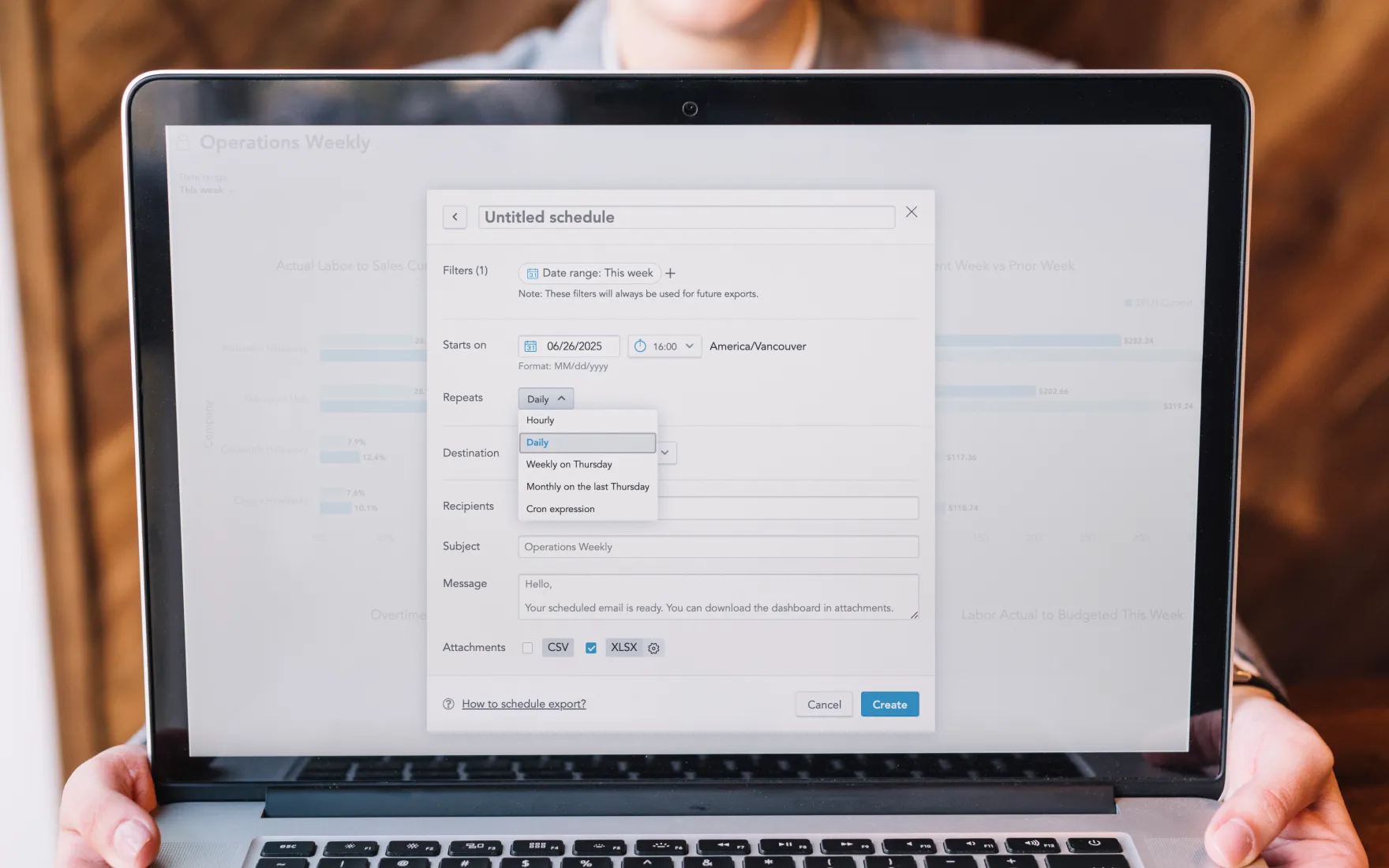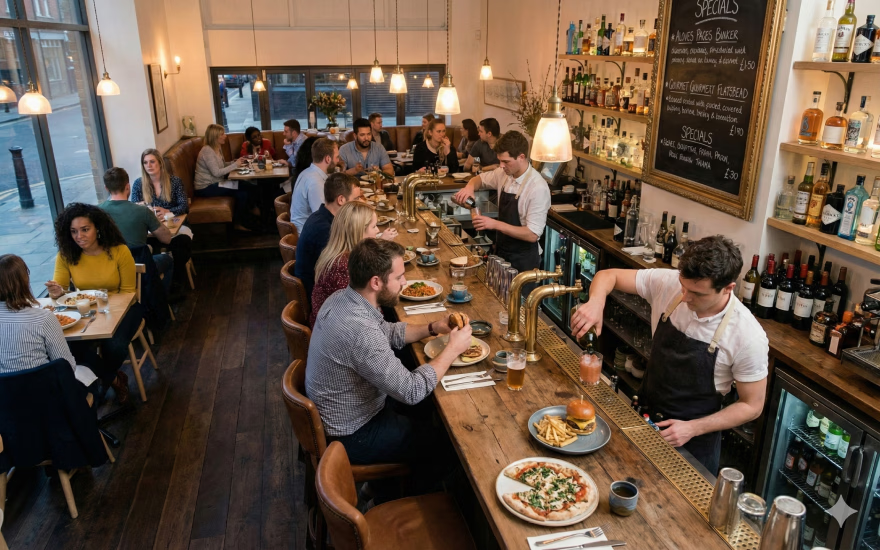How Do Michelin-Starred Restaurants in NYC Manage Their Staff So Effectively?

Operating at the highest level of the restaurant industry takes much more than culinary talent. For Michelin-starred restaurants in New York City, the magic lies as much in staffing strategy, compliance, and workforce discipline as it does in food quality and presentation. These kitchens and dining rooms don't just run — they hum with efficiency, driven by well-managed teams and top-tier operational systems.
Why Does Operational Excellence Matter in Michelin-Starred NYC Restaurants?
The Michelin Guide is known for its discerning standards, sending anonymous inspectors across the globe to evaluate restaurants on food quality, consistency, technique, and service. According to the Michelin Guide, only restaurants offering outstanding dining experiences earn stars — and operations play a critical role in delivering that excellence consistently.
A 2024 article from CNN explains that even a single star means a restaurant is worth a special journey. In a city like New York — home to more than 70 Michelin-starred establishments — standing out demands agile staffing, flawless execution, and precision planning across every shift.
These restaurants don’t just train for performance; they build systems that guarantee it. That makes their staffing approach worth studying for any restaurant leader.
How Do Michelin-Starred Restaurants in NYC Manage Their Staff?
At the core of every Michelin-starred success is a clear and disciplined approach to restaurant staff management. In New York City’s top kitchens, excellence is never random — it's a result of smart workforce structuring and constant refinement.
Common Staffing Structures in Elite Restaurants
Whether it’s Le Bernardin or Eleven Madison Park, Michelin-caliber restaurants organize their teams into well-defined units:
- Front-of-house (servers, hosts, sommeliers)
- Back-of-house (chefs, line cooks, prep staff, dishwashers)
- Administrative and HR roles
- Cleaning and support staff
Top performers specialize within these roles and create clear chains of accountability. Everyone knows their lane — and how their contribution affects the guest experience.
Workforce Management Platforms Centralize Performance
To keep precision intact through every lunch and dinner service, Michelin-minded restaurants use smart workforce platforms for centralized scheduling, onboarding, compliance, and payroll.
Tools like Push Operations bring clarity to chaos, giving general managers full visibility over hours, skills, availability, and shift preferences — allowing for seamless communication between front and back-of-house teams.
Staffing at Scale vs. Intimacy
- At Le Bernardin, which manages a high volume of daily covers, staff structure is vast but segmented for control and accountability.
- By contrast, Atomix operates with a more intimate team — proving that operational discipline isn't about size but about intention. Even smaller teams benefit from the same high-level coordination to maintain consistency and service standards.
What Scheduling Strategies Keep Teams Consistent and Compliant?
Consistent coverage and labor compliance are not luxuries — they’re must-haves in a Michelin environment. These restaurants use dynamic scheduling strategies that keep quality up and surprise labor costs down.
Advanced Scheduling Techniques Make the Difference
Top-tier restaurants don’t schedule at random. Instead, they use techniques like:
- Skill-based shift planning — assigning staff to shifts based on both availability and capability
- Fair shift distribution — reducing burnout and increasing team morale
- Peak-hour planning — aligning more seasoned staff with stress-prone shifts
Modern tools like Push Scheduling remove the guesswork by automating these decisions through real-time data. Managers can view labor costs, availability, and compliance conflicts before finalizing a schedule.
Tools for Smart Scheduling
- Push's centralized scheduling software allows managers to create, adjust, and communicate schedules from any device
- Notifications help reduce no-shows, alert staff instantly to shift changes, and foster accountability
- Push Chat makes it easy to send team-wide messages, so everyone knows about the daily specials, VIP guests, and staffing changes before they walk into the restaurant
These streamlined workflows are what keep Michelin-level standards operating week after week — and they’re increasingly accessible to restaurants of all sizes.
How Do They Control Labor Costs Without Sacrificing Quality?
Labor is often a restaurant’s largest expense. For high-end establishments, it's also non-negotiable — service must stay world-class. Balancing these two priorities requires real-time visibility into workforce data and proactive labor planning.
Labor Metrics Drive Smart Decisions
The most efficient Michelin-starred restaurants monitor:
- Labor cost as a percentage of revenue
- Overtime usage
- Cost per cover
According to RestaurantOwner.com and the National Restaurant Association, labor costs for fine-dining venues usually fall between 25–35%. Elite performers aim closer to 20–25% by optimizing staff levels and shift timing.
Platforms like Push Reporting allow decision-makers to monitor these KPIs in real time — empowering them to adjust labor on the fly to match demand.
Why Is Staff Retention Crucial in Michelin-Starred Restaurants?
Consistency earns stars — and that hinges on retaining experienced staff. High turnover leads to inconsistent execution, missed details, and diminished guest experiences.
Retention Reduces Costs and Preserves Quality
Replacing a trained bartender or line cook doesn’t just take time; it affects service flow, team morale, and training costs. Michelin kitchens treat employees like long-term investments, offering:
- Full onboarding experiences
- Role clarity from day one
- Career path mapping and mentorship
- Transparent, accurate payroll processing
Reduce Turnover With HR Tools Like Push
Push’s HR features are tailored to fine-dining teams:
- Digital onboarding cuts down admin time while increasing engagement
- Predictive scheduling ensures shifts are never overstaffed or understaffed, preventing burnout
- Reliable payroll systems boost trust and reduce disputes
These investments are what separate dining experiences built for lasting impact from those at risk of burnout and inconsistency.
What HR and Payroll Systems Power NYC's Top Restaurants?
Relying on spreadsheets or manual payroll in a high-performance kitchen is a recipe for disaster. Michelin-level teams require deeply integrated HR and payroll systems that can:
- Track certifications and compliance for food safety and labor laws
- Manage time-off requests, sick leave, and benefits
- Sync seamlessly with scheduling platforms for accurate payroll runs
- Automate tip pooling and gratuity tracking to ensure fair, transparent distribution
- Offer employee self-service portals for accessing pay stubs, schedules, and HR documents on demand
- Boost retention with built-in employee engagement tools — like engagement surveys and anonymous feedback channels to track morale and address issues early
Can Smaller Restaurants Adopt These Methods Without a Michelin Budget?
Yes — and it’s more achievable than most think. Michelin-level methods may be born in five-star kitchens, but they’re scalable across every service model with the right technology.
Even smaller operations can implement:
- Skill-based shift scheduling
- Transparent payroll and HR tracking
- Compliance monitoring
- Digital onboarding and role training
The ROI is real: reduced employee turnover, higher productivity, and fewer compliance issues all fuel sustained business growth. That’s what makes workforce systems like Push a smart investment even for lean teams.
What Can Every Restaurant Learn from Michelin-Starred Operators?
The key takeaway? Operational excellence starts — and ends — with people. Michelin-starred restaurants in New York City don’t just train talent; they empower it with systems, support, and data-driven decisions.
Takeaways for every restaurant:
- Invest in workforce systems early — not just once growth hits
- Prioritize staff retention as much as guest retention
- Use real-time data to balance service quality and labor costs
- Standardize onboarding and training to increase readiness and accountability
With platforms like Push, any restaurant can put these lessons to work, delivering consistency and control night after night — star or no star.
Ready to Fire Up Operations?
Behind every world-class guest experience is a well-managed team. Whether you're running a neighborhood hotspot or aiming for your first Michelin star, the right staffing strategy will make or break your operation.
Push Operations helps restaurants of all sizes streamline scheduling, payroll, and HR — all in one place. Want to give your team Michelin-level support?
Book a Push demo to get started.



